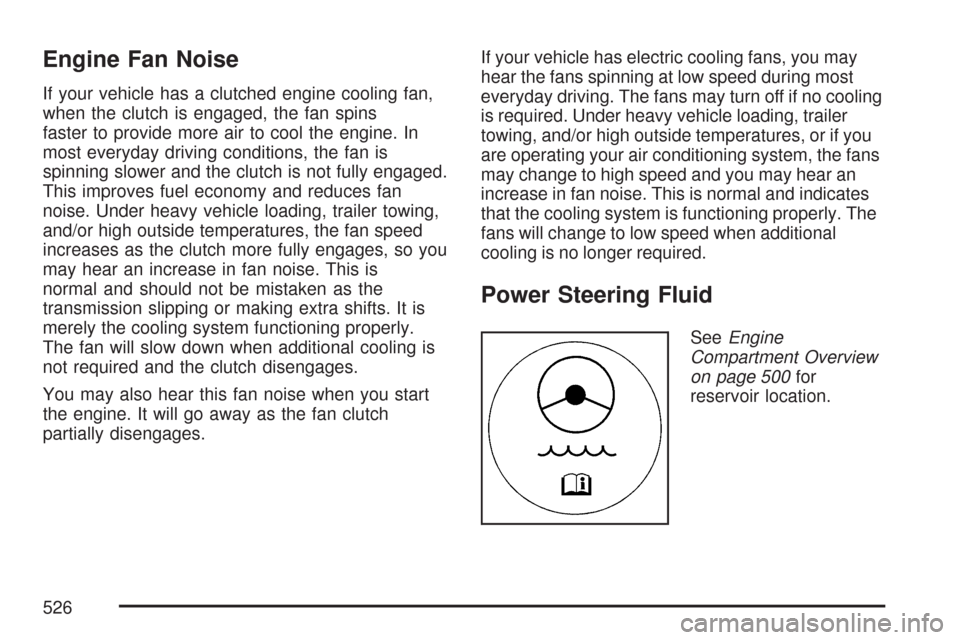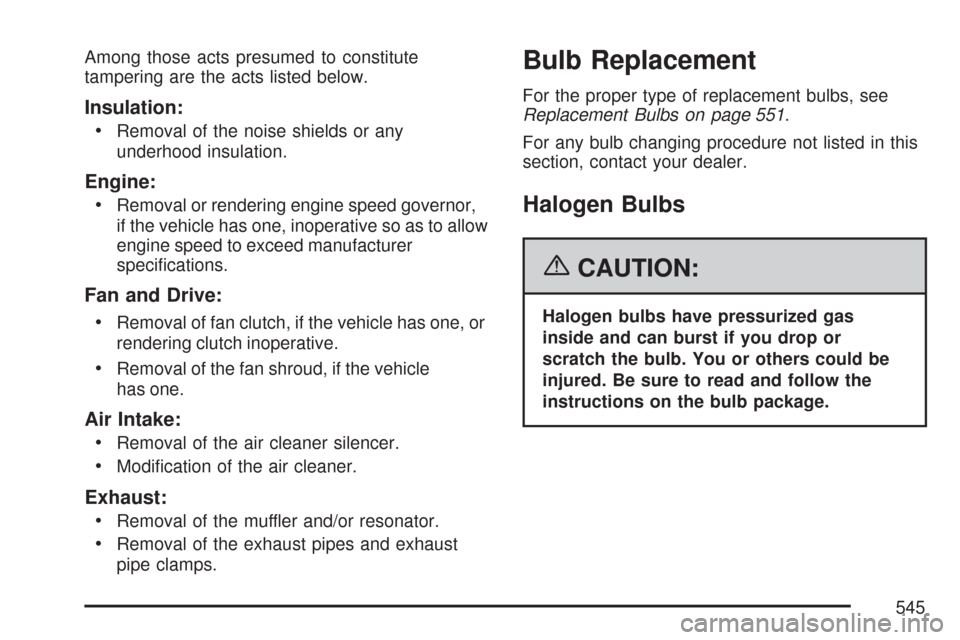Page 526 of 684

Engine Fan Noise
If your vehicle has a clutched engine cooling fan,
when the clutch is engaged, the fan spins
faster to provide more air to cool the engine. In
most everyday driving conditions, the fan is
spinning slower and the clutch is not fully engaged.
This improves fuel economy and reduces fan
noise. Under heavy vehicle loading, trailer towing,
and/or high outside temperatures, the fan speed
increases as the clutch more fully engages, so you
may hear an increase in fan noise. This is
normal and should not be mistaken as the
transmission slipping or making extra shifts. It is
merely the cooling system functioning properly.
The fan will slow down when additional cooling is
not required and the clutch disengages.
You may also hear this fan noise when you start
the engine. It will go away as the fan clutch
partially disengages.If your vehicle has electric cooling fans, you may
hear the fans spinning at low speed during most
everyday driving. The fans may turn off if no cooling
is required. Under heavy vehicle loading, trailer
towing, and/or high outside temperatures, or if you
are operating your air conditioning system, the fans
may change to high speed and you may hear an
increase in fan noise. This is normal and indicates
that the cooling system is functioning properly. The
fans will change to low speed when additional
cooling is no longer required.
Power Steering Fluid
SeeEngine
Compartment Overview
on page 500for
reservoir location.
526
Page 545 of 684

Among those acts presumed to constitute
tampering are the acts listed below.
Insulation:
Removal of the noise shields or any
underhood insulation.
Engine:
Removal or rendering engine speed governor,
if the vehicle has one, inoperative so as to allow
engine speed to exceed manufacturer
speci�cations.
Fan and Drive:
Removal of fan clutch, if the vehicle has one, or
rendering clutch inoperative.
Removal of the fan shroud, if the vehicle
has one.
Air Intake:
Removal of the air cleaner silencer.
Modi�cation of the air cleaner.
Exhaust:
Removal of the muffler and/or resonator.
Removal of the exhaust pipes and exhaust
pipe clamps.
Bulb Replacement
For the proper type of replacement bulbs, see
Replacement Bulbs on page 551.
For any bulb changing procedure not listed in this
section, contact your dealer.
Halogen Bulbs
{CAUTION:
Halogen bulbs have pressurized gas
inside and can burst if you drop or
scratch the bulb. You or others could be
injured. Be sure to read and follow the
instructions on the bulb package.
545
Page 615 of 684
Harness
ConnectorUsage
BRAKE
CLUTCHBrake Clutch Harness Connector
SEO/UPFITTERSpecial Equipment Option Up�tter
Harness Connector
Circuit Breaker Usage
CB1Passenger’s Side Power Window
Circuit Breaker
CB2 Passenger’s Seat Circuit Breaker
CB3 Driver’s Seat Circuit Breaker
CB4 Not Used
Underhood Fuse Block
The underhood fuse block is located in the engine
compartment, on the driver’s side of the vehicle.
Lift the cover to access
the fuse block.
To remove fuses, hold the end of the fuse
between your thumb and index �nger and pull
straight out.
615